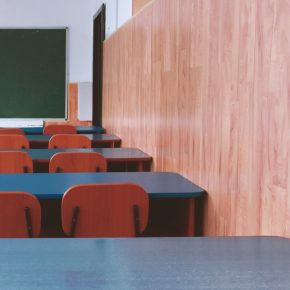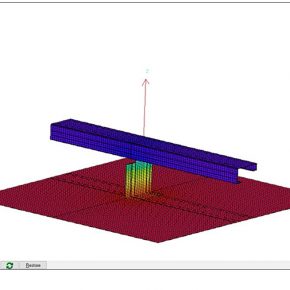
GUEST ARTICLE: Returning wood to the classroom
 The RAAC crisis has shone a spotlight on building safety. And while it’s absolutely right we focus on rebuilding and refurbishing schools in the UK as a priority, let’s not replace RAAC with concrete when the opportunity presents itself to build back better. These are the words of Mila Duncheva, Business Development Manager, UK and Ireland Stora Enso, who writes the following article…
The RAAC crisis has shone a spotlight on building safety. And while it’s absolutely right we focus on rebuilding and refurbishing schools in the UK as a priority, let’s not replace RAAC with concrete when the opportunity presents itself to build back better. These are the words of Mila Duncheva, Business Development Manager, UK and Ireland Stora Enso, who writes the following article…
A study by Cornell University found that subpar learning environments led to low test scores, absenteeism and poor academic achievement in schools. So, while safety needs to be at the heart of our rebuilding journey taking the opportunity to look holistically at how buildings are designed, built and used for our pupils shouldn’t be missed.
Build now, and build well
With the current crisis focusing on the need to fix problems, there has been, and continues to be, a growing demand for school space
Over the past four years, England has seen an influx of additional students enter the primary and secondary school system, to fill the equivalent of over 12,000 classrooms. In response to this and the vast number of schools in need of refurbishment, the UK Government launched its school rebuilding programme in 2020. In some years, 50 schools are chosen, in others, 200. But even 200 schools are not enough, particularly when many projects are in need of refurbishments to make them safe, not necessarily increasing capacity or building anew. And now these refurbishments are being delayed as the pressing RAAC crisis is tackled head on.
As such, this still leaves a concerning gap between classroom availability and demand. Overall, growing class sizes and governmental focus on preventing collapse instead of creating new classrooms, means that creating quality spaces for young minds must be top of school administrators’ own agendas when factoring in costs for the year.

Solving this with speed
Speed is an important factor for schools to consider and when it comes to speeding up construction, there’s a few ways that this can be done – but we can’t afford to let speed impede quality. One of these is using as far as possible modern methods of construction – a favourable solution when schools only have a few months to build when children are away on holiday. Constructing the superstructure in a factory environment means finding a suitable material, like CLT elements that are precision-engineered in a mill, ready to slot together onsite when the time comes.
Timber: better for mind and better for body
Timber also provides us with the opportunity to build more modern buildings, fully equipped for classes (and minds) of the 21st century. And unlike the schools of old, engineered wood is a safe building material without the risks of RAAC nor even COSHH due to CLT installation being a dust-free build method (because wood dust would be handled in the manufacturing environment and no further wood cutting is needed on site thanks to the precise pre-manufacturing).
In an era where there is knowledge about these issues, choosing a safer material is a no brainer. And while some may fear the fire risk as a safety concern, evidence points to the fact that engineered timber, such as CLT, is designed to withstand fires up to 120 mins for safe evacuation and, meets the same fire regulations as steel and concrete. In fact, a large-scale experiment research study found that ‘the performance of the CLT structure performed better than the light steel frame structure’.
Biophilic design
Moreover, studies on the effect of working in a wooden environment have found that buildings with a biophilic design can lower stress levels, increase productivity and enhance creativity. These wellbeing benefits cannot be underestimated, especially as children catch up on education missed during COVID lockdowns and any potential RAAC disruption. Whilst schools might think that building high quality, modern buildings to foster imagination and boost wellbeing is not a priority, this investment is set to pay dividends in classroom creativity and academic outcomes later down the line.
Budgets will always be an issue that school administrations have to contend with – with or without governmental funding, but now it’s being made an urgent priority, thinking about better alternatives should be the focus. With the ball now in their court, schools have the opportunity to undertake projects which will not only save time and money, but also make a tangible difference to safety, wellbeing and the environment.
Latest news

26th July 2024
Enfield Speciality Doors completes world-class project for Atlas Copco HQ
A rundown office and warehouse building completely transformed into a modern headquarters for Atlas Copco has been fitted with more than 120 internal fire doors from Enfield Speciality Doors.
Posted in Access Control & Door Entry Systems, Articles, Building Industry News, Building Products & Structures, Building Systems, Case Studies, Doors, Interior Design & Construction, Interiors, Posts, Restoration & Refurbishment, Retrofit & Renovation, Security and Fire Protection, Sustainability & Energy Efficiency, Timber Buildings and Timber Products, Wooden products
26th July 2024
Abloy UK launches new white paper
Abloy UK, a leading provider of security and access control solutions, has launched a new white paper.
Posted in Access Control & Door Entry Systems, Architectural Ironmongery, Articles, Building Industry News, Building Products & Structures, Building Services, Doors, Facility Management & Building Services, Health & Safety, Information Technology, Innovations & New Products, Publications, Research & Materials Testing, Security and Fire Protection
26th July 2024
MCRMA Member Profile: David Roy, Director of Roofconsult
David Roy of MCRMA member company Roofconsult has more than 50 years’ experience to draw upon working in the building envelope sector and a unique perspective on how it has changed in that time.
Posted in Articles, BIM, Infrastructure & CAD Software, Building Associations & Institutes, Building Industry News, Building Products & Structures, Building Services, Building Systems, Cladding, Information Technology, Restoration & Refurbishment, Retrofit & Renovation, Roofs, Walls
26th July 2024
Strand: Enhancing Door Functionality and Safety
Craig Fox, Sales Director for Strand Hardware, outlines how door industry professionals might apply door limiting stays…
Posted in Architectural Ironmongery, Articles, Building Industry News, Building Products & Structures, Building Services, Doors, Facility Management & Building Services, Health & Safety, Restoration & Refurbishment, Retrofit & Renovation
 Sign up:
Sign up: